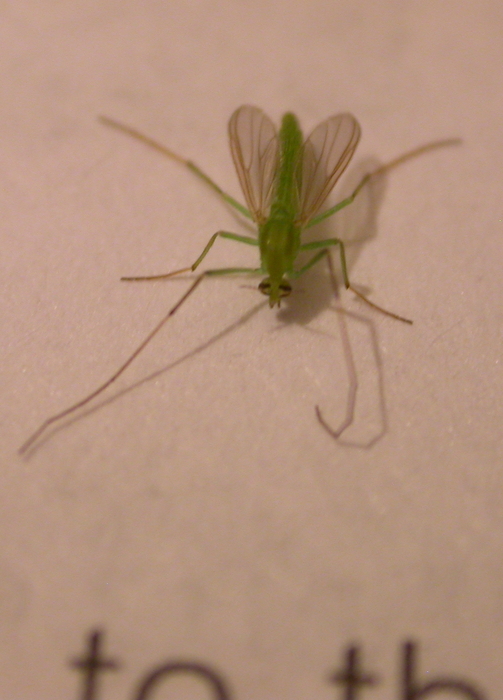
This one would have been better off in the forest, but elected to come inside. You can see how tiny it was by comparing to the text at the bottom of the photo. It flew like a mosquto, so I zapped it with my electric flyswatter.
Another foray into the forest (this time the Gaasperplas) and a few other photos.

This one would have been better off in the forest, but elected to come inside. You can see how tiny it was by comparing to the text at the bottom of the photo. It flew like a mosquto, so I zapped it with my electric flyswatter.

Even in macro mode it's hard to ID this thing for sure, but the mouthparts look suspiciously straw-like. It actually recovered from its electrocution and was sent back outside without biting anyone. I can find no info on bright green mosquitos living in the Netherlands, but this could be a fellow immigrant too.
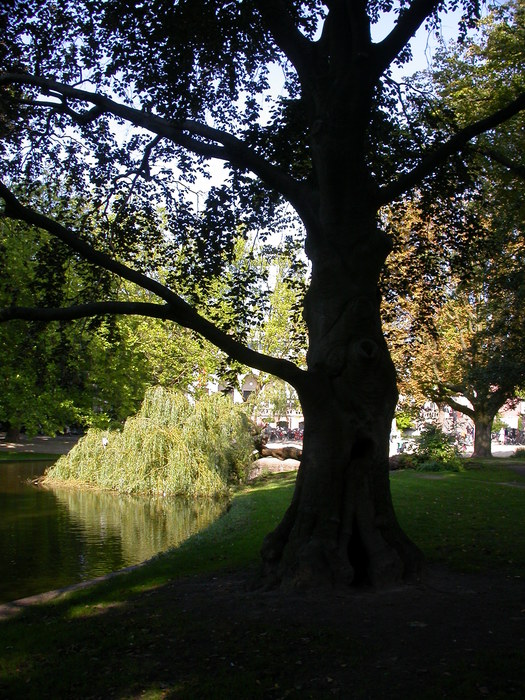
We took a brief walk to the Vondelpark, but it was FAR too packed with people for any chance at photographing mushrooms. I snapped this group of trees in a rare moment of quiet.

I've taken to describing my houseplant habit as balcony farming
. Perhaps this picture illustrates why. There are a total of 18 plants on the balcony at this point, plus an additional 9 on the shady side of the house. In addition to my peppers and tomatillos, Eric has two pots of wheat growing (that's tarwe for the Dutch readers). We have no idea if wheat will produce in a pot, but right now it's fun to watch it grow.
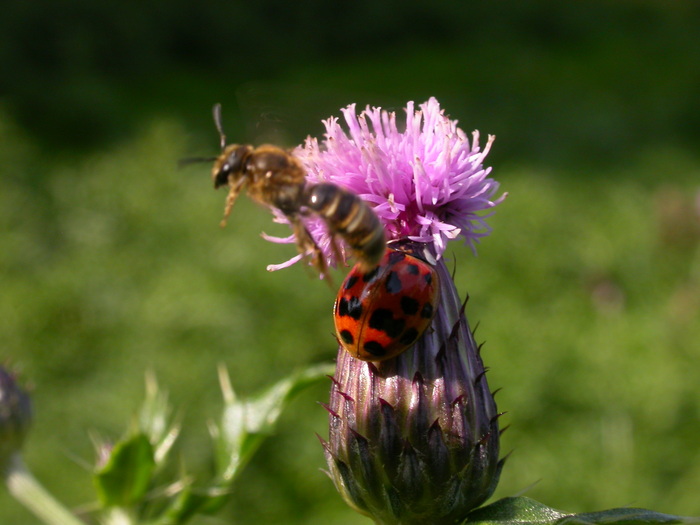
My photograph of the ladybug was interrupted by a fly-by. This photo was entirely an accident. The photo below is how it's supposed to look.

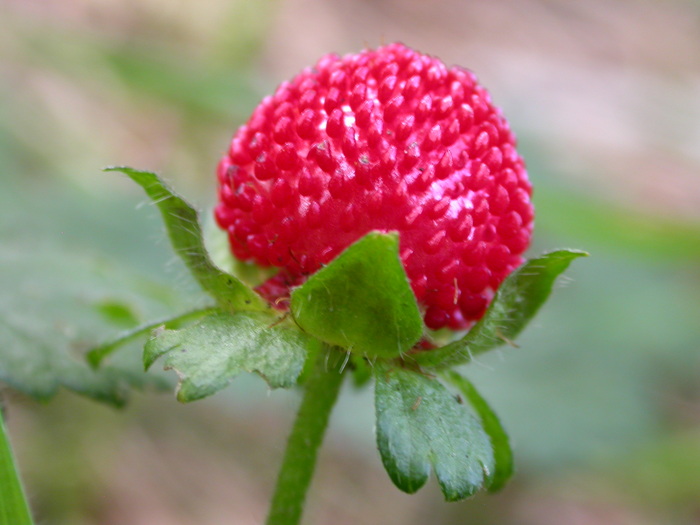
Looks like a strawberry, smells like a strawberry, tastes like an aspirin. The wild strawberries around here make you wonder how anyone came to try enough to find the sweet ones. Perhaps people ate all the patches of wild sweet ones, and only the really nasty ones survived.
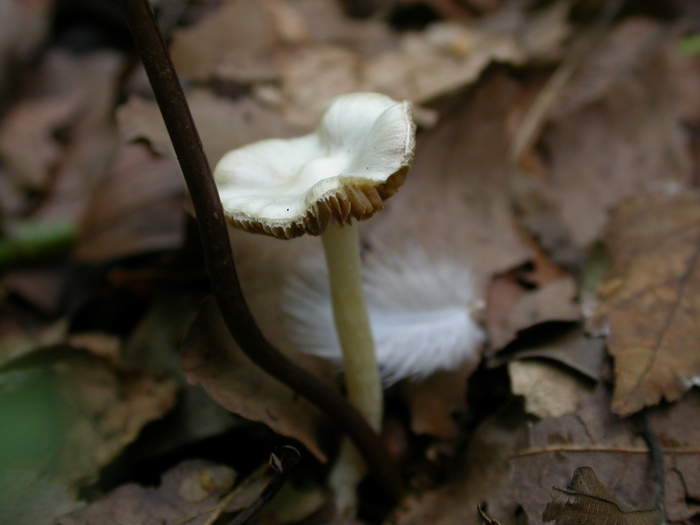
A small white mushroom with pinkish-brown gills, sheltering under a leaf of ivy. I don't have any good guesses as to the genus.
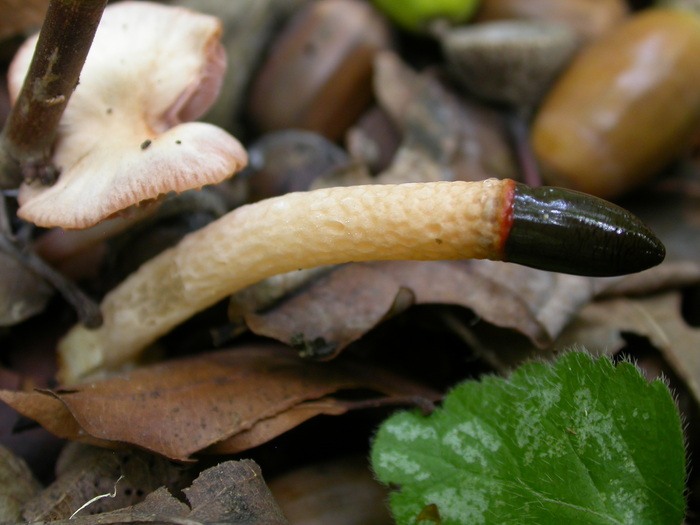
I was quite happy to find this diminutive fungus (note the size of the acorns in the background. This is a member of the family of stinkhorns, and is the first of the genus that I've found. The genus name is Phalloides, for understandable reasons. There's really just no way to look at one of these things and not be reminded of mammalian reproductive organs (the mushroom *is* the reproductive organ of the fungus, but the resemblence is likely coincidental). They are also very tricky to photograph, as the autofocus does not like the slippery dark surface of the cap. I ended up putting my finger next to it for focus, prompting Robbert to photograph the set-up (once he'd quit laughing enough to hold the camera still).
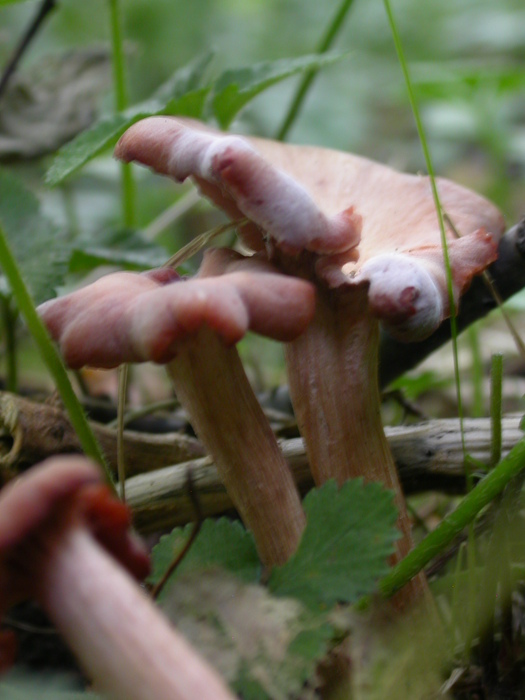
At first, with their stout stalks and ruffled margins, I thought these might be diminutive pink members of the chanterelle family.
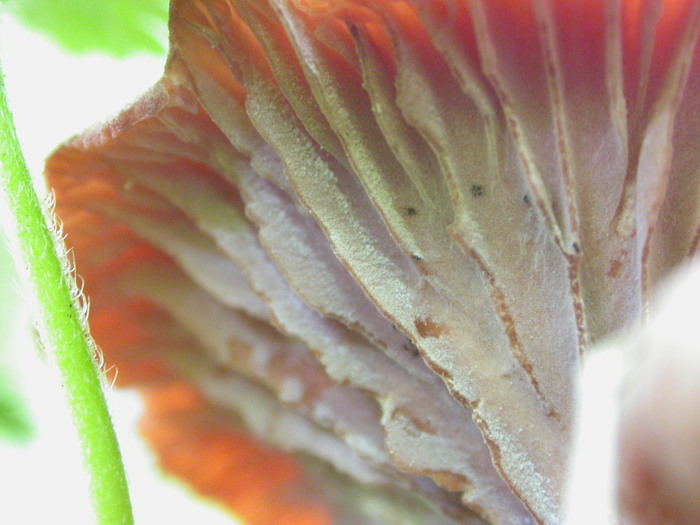
But are these blade-like or fold-like? They seem somewhere in between to me. I still think this is likely a member of the genus Canthrellus but I'm not sure.

A group of swans decided to hang out with us for a bit. Robbert got much better photos of them, particularly this photo of the swans eating from the bottom of the lake.
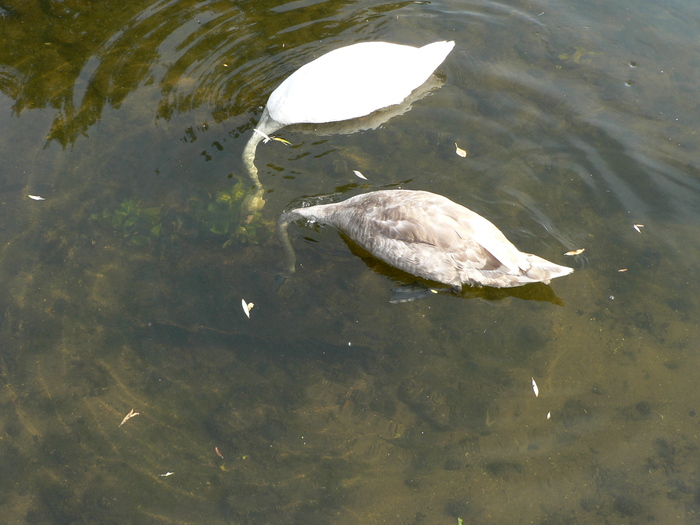

A very young Amanita, probably also an A. muscaria but only showing its white universal veil, and not yet any of the bright colors underneath.
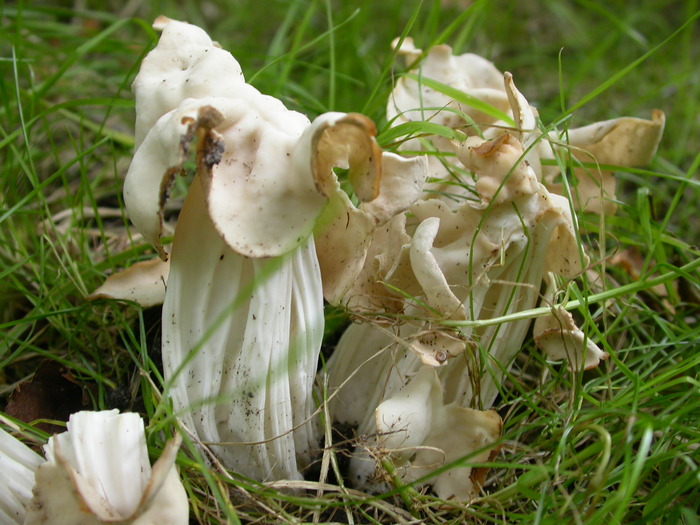
On our way out we passed this cluster of white Helvellas. I'm not sure of the species but they looked like large H. lacunosa, but white.